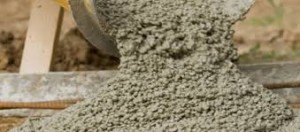Concrete Admixtures
Concrete Admixtures
Concrete Admixtures
Product Certification
Concrete is the foundation of many major projects. Therefore, it is imperative that concrete used in construction to be strong, crack resistant and workable. Admixtures are used to improve or change specific properties in concrete and improve the quality of concrete construction projects. Concrete admixtures do more than just improve the strength of the concrete; they can also be used to add color or texture to the concrete for decorative purposes.
OVERVIEW
We supply a complete range of admixtures for the design of durable and cost-effective concrete structures. These include:
 Water reducers, mid-range water reducers and high range water reducers, which can be adapted for hot, moderate and cold weather climates. Water
Water reducers, mid-range water reducers and high range water reducers, which can be adapted for hot, moderate and cold weather climates. Water
reducing admixtures often referred to as plasticizers, are intended to increase the workability of plastic or fresh concrete. They allow its placement with less consolidation effort. They are often used to reduce the water content of concrete mix designs while maintaining their workability, improving as a result the concrete strength and durability properties. High range water reducers otherwise known as superplasticizers allow for increased water reduction beyond what is achievable with traditional plasticizers and with lesser deleterious effect. Midrange water reducers are designed as combinations of the above with water reduction characteristics in the intermediate range. All types of water reducers may be supplied with retarding or accelerating effects to adjust properties for seasonal and/or job requirements.
Air entraining admixtures primarily used to add and stabilize tiny air bubbles in concrete. Besides the increase in freeze-thaw and scaling resistances, air-entrained concrete is more workable than non-entrained concrete. The use of air-entraining agents also reduces bleeding and segregation of fresh concrete.
Set-retarders designed to delay concrete setting by slowing the concrete hydration mechanism. They are typically used to delay setting in hot weather environments, to allow for long distances from batching plant to site and for large and difficult pours where partial setting before the pour is complete is undesirable.
Set-accelerators designed to reduce setting time by speeding concrete hydration. They are typically used to accelerate setting in cold weather, prefab manufacture and, shotcreting. Products based on nitrates are often favored over chloride-based products as the latter may cause corrosion in steel reinforcements.
Specialty admixtures such as integral water repellents for reduced moisture absorption rates, viscosity-modifiers to control undesired bleeding/segregation commonly used in self-consolidating concrete, anti-washout admixtures to limit washout in underwater concrete, shrinkage reducing agents to minimize surface cracks, corrosion inhibiting agents for superior steel protection, antifreeze admixtures to prevent frost attack in very cold climates, admixtures for lightweight concrete, admixtures to reduce alkali-silica reactivity, synthetic fibers used as secondary reinforcement, silica fume to create durable high-performance concrete, blended cements for enhanced performances and lower carbon dioxide emissions, surface retarders for architectural and exposed aggregate surfaces, mould release agents for reduced adhesion against formworks and curing agents for optimized strength development
